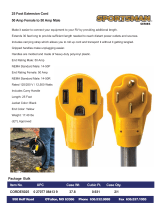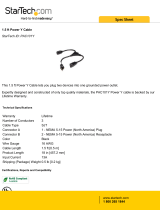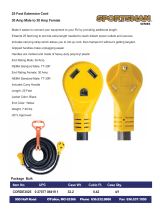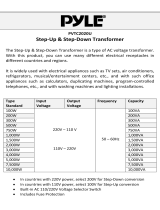
unity (~1), which allows smaller circuits to be used. Using energy-efficient PFC devices, includin
UPSs, can lead to significant cost savings for data centers where the incoming feeds are measured
megawatts. As a standard feature, power supplies for ProLiant servers all contain circuitry to correct
the power factor (that is, to bring input current and voltage into phase).
g
in
Leakage current
created by EMI filter capacitors located between the primary circuits and the
cause
al
nected to
it
Grounding
fferent types of grounding: (1) providing a personnel ground to avoid shock hazard;
ding (providing a low-impedance path to ground between exposed metal parts
er to the
event of
g protection. This type of grounding is seen
It is
ed strictly for
e
Earth leakage current is
primary grounding (earthing)
2
conductor and subsequently the chassis of the computer. The leakage
current is measured from the accessible parts of the equipment back to the phase and neutral
conductors. Under normal operating conditions, leakage current does not create a hazard. Be
the current is additive when several pieces of equipment are connected together to the same source,
for example, a UPS and a PDU, the level of leakage current can reach a hazardous potential quickly.
If the primary ground conductor becomes open for any reason, the leakage current and all of its
potential will become available on any conductive (metal) surface of the equipment. If an individu
comes in contact with the chassis of the equipment and ground, electric shock can occur.
Because of the potential high ground-leakage currents associated with multiple servers con
the same power source, a reliable grounded connection is essential before applying power to the
system. HP recommends using a PDU that is either permanently wired to the building’s branch circu
or that features a non-detachable cord that is wired to an industrial style plug. NEMA locking-style
plugs or those complying with IEC 60309 are considered suitable for this purpose.
There are three di
(2) providing a dedicated ground path for clearing a fault on a circuit; and (3) over-voltage or
lightning protection.
The first type of groun
and personnel) is a requirement for personnel safety. This type of grounding uses the ground wire that
is generally seen at a power panel, a motor, an instrument cabinet, or a server case. This ground
wire may also be attached to the inside of a cabinet and is strictly for personnel protection.
The second type of grounding is for maintaining a low-impedance path from the electrical us
voltage source. In the event of a fault, the over-current protection device clears the fault immediately to
prevent equipment damage or other problems. This type of grounding uses the ground wire inside the
conductor installed from the circuit breaker to the electrical device and is only seen when the
termination box is opened. This conductor is the direct path from the user to the source. In the
a ground fault, it facilitates tripping the circuit breaker.
The third type of grounding is for over-voltage or lightnin
on the tops of commercial buildings and industrial facilities to protect against direct and indirect
lightning strikes. A grounding conductor is installed from the top of the building down to ground.
normally called a downcomer. This is a direct connection from the lightning rods (air terminals) on the
top of the building to earth to avoid potential rise on the facility ground system.
In the industrial world another type of ground, called the instrument ground, is us
grounding sensitive electronic equipment and components. The instrument ground must still be
connected to the plant ground or safety ground; however, it is typically a distance away from th
plant ground to avoid stray ground currents, indirect lightning strikes, or potential differences in
ground. Figure 13 shows the different types of grounding.
2
The European community uses the term earthing for grounding. In the rest of this discussion the terms grounding, ground, and grounded will be
used in place of the earthing forms.
15

























